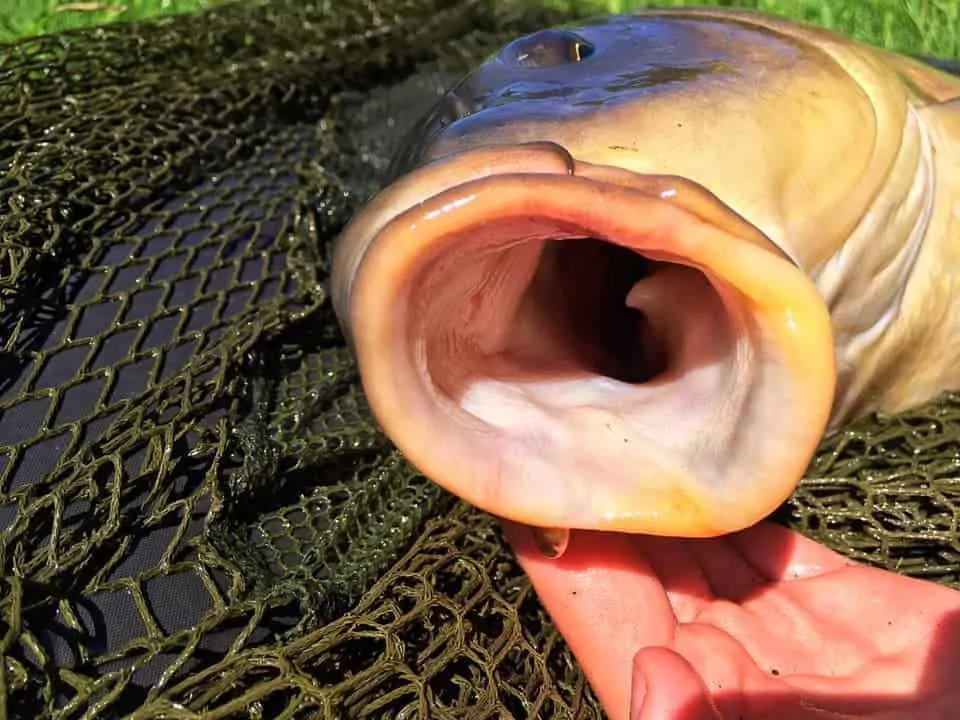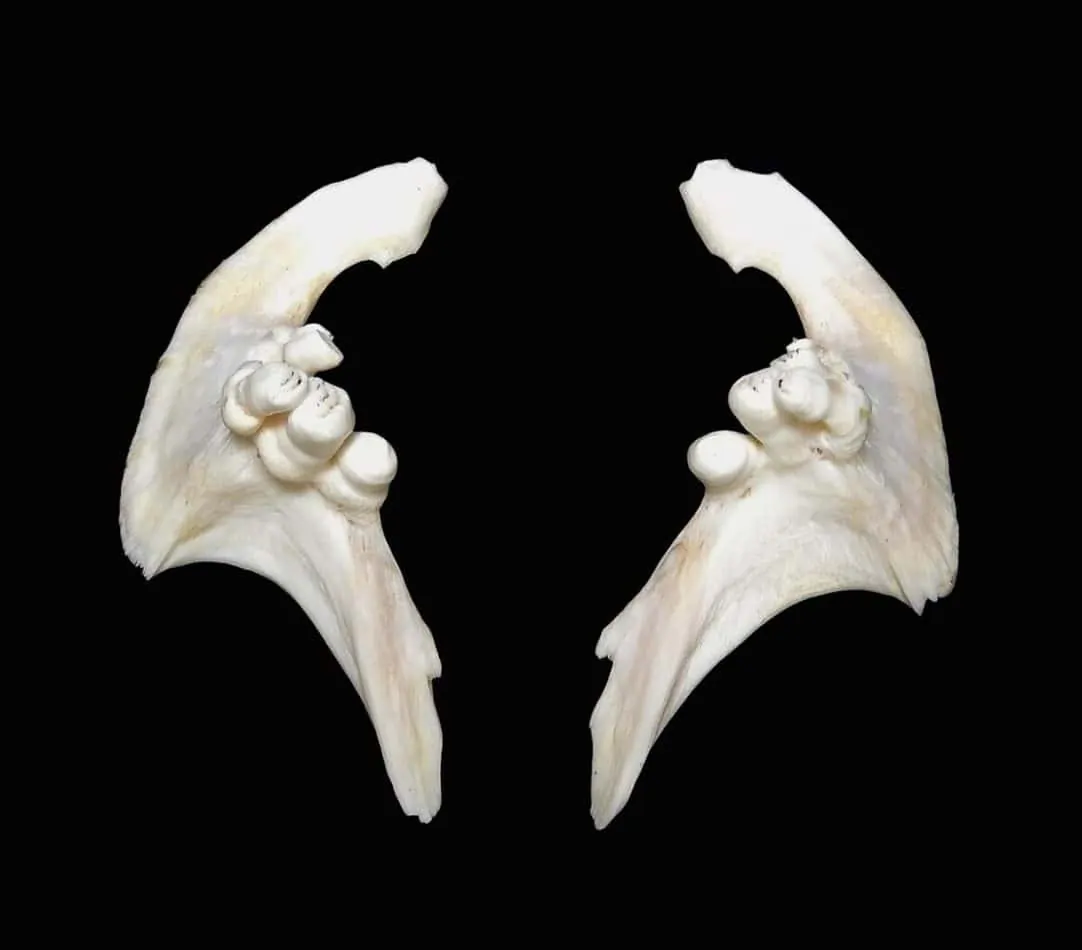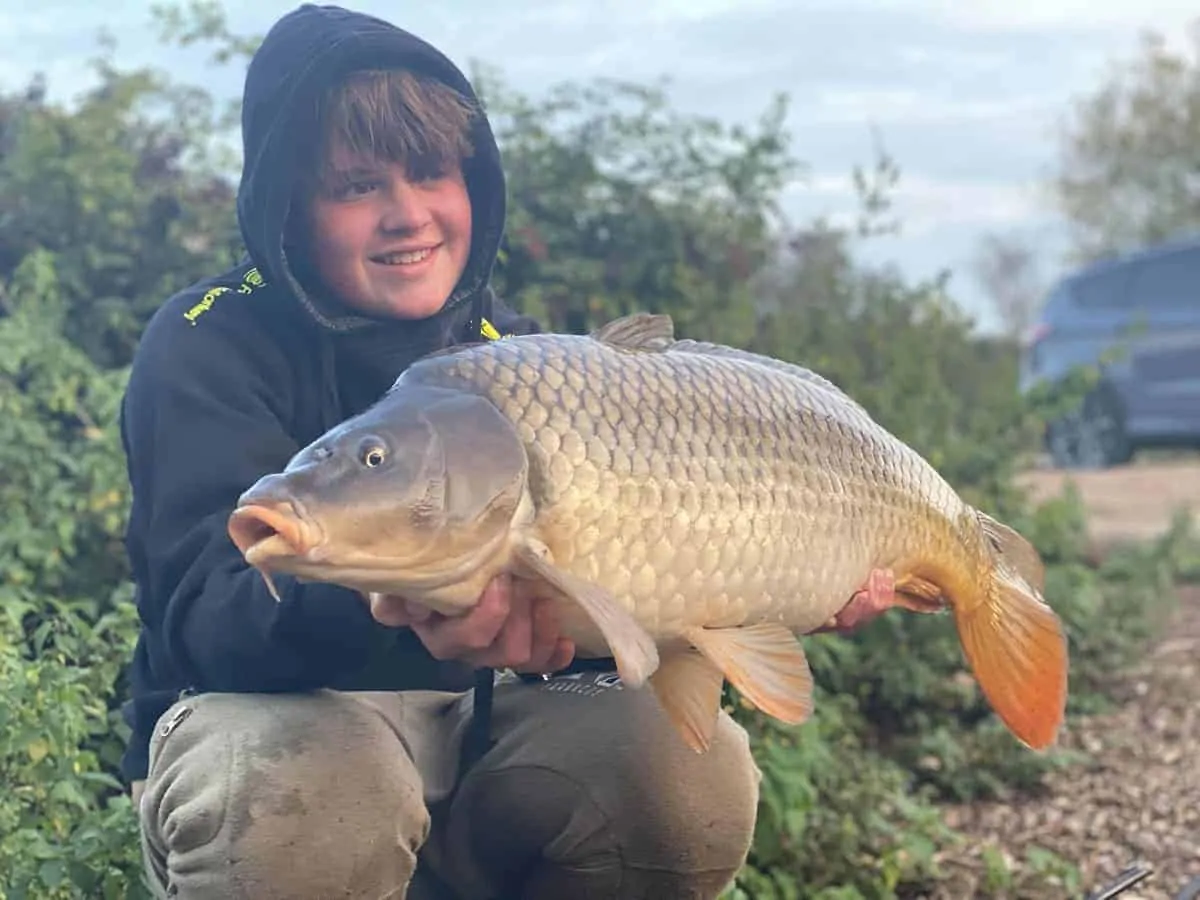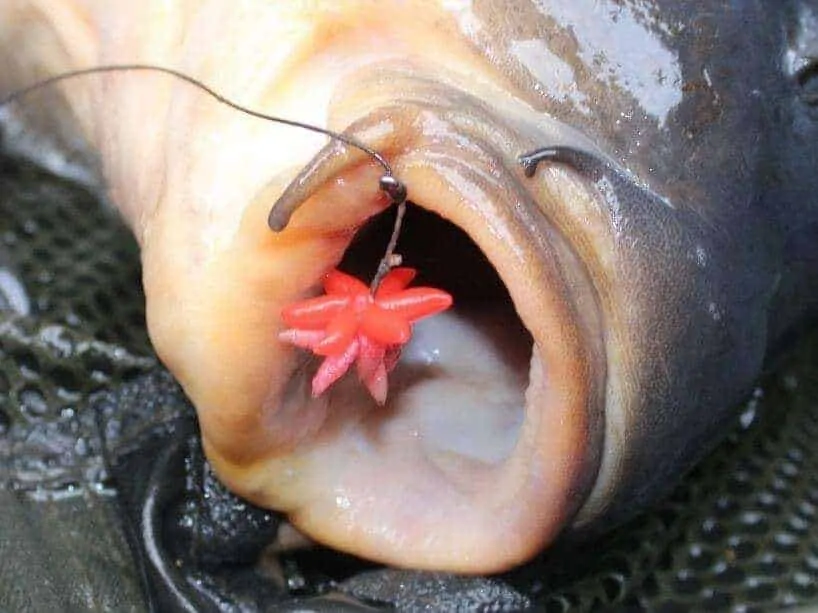As a carp angler, I receive a lot of questions about this interesting species. I recently read a scientific study about the carp’s feeding behavior and decided to do some in-depth research myself in order to be able to answer the commonly asked question: Do carp have teeth?
Carp actually have teeth. They are called pharyngeal teeth and are located deep down at the back of the carp’s throat. The fish use them to both mechanically chew and crush their food.
Continue reading this article and learn all the interesting and unknown facts about the carp’s hidden teeth.
Pro Tip: If you want to get into carp fishing, I can really recommend this helpful and comprehensive beginner’s guide on Amazon. It’ll get you started in no time!
Do Carp Have Any Teeth?

Carp (cyprinids) have special types of teeth called pharyngeal teeth which are located at the very back of their throats. All species of carp and suckers possess these teeth but are otherwise completely toothless in the frontal area of their mouths.
These teeth, which aren’t sharp or pointy but rather molar-like, can be found along the pharyngeal arch of the fish’s throat. They can vary in both size and number and are part of the arch’s overall bone structure.
In fully grown carp, they actually look somewhat like human molars, both when it comes to shape and size, as they are rather flattened and rounded.
During a carp’s life, these throat teeth can be replaced several times and will always grow back.
It’s a really fascinating part of the carp’s anatomy that is completely hidden and, to many, rather unexpected. It took several years before I even saw the teeth when examining a carp’s mouth more closely during a fishing session.
The fact that they do not have any visible teeth is the reason why so many people believe they do not have any at all and that carp must be herbivores.
In reality, carp are actually omnivores, eating a variety of both aquatic plants and small animals.
How Do Carp Use Their Teeth?

In order to be able to swallow and digest harder foods (such as crayfish or mussels), they efficiently use their teeth to get to the meaty insides of their hard-shelled prey.
This they do by moving their jawbones in a rotary fashion, which, in turn, creates a grinding movement. The teeth are then pushed upwards toward the hard bony roof of the throat, allowing the carp to crush and grind any hard matter.
This process makes swallowing food easier and aids the carp’s digestion, as bigger particles are ground, shredded, and torn into smaller ones.
The ground pieces of shells that cannot be swallowed and digested are simply ejected, as the carp will just spit them out.
This grinding crushing process enables the carp to crack open even the hardest of food sources, including hard boilies and pellets used by anglers as loosefeed and hookbaits.
Can Carp Bite Through Fishing Line?

When you fish for carp and use the right type of tackle and rigs, they will almost always be hooked in the lips, which hence makes it impossible for the fish to bite through your line.
However, I have heard of incidents where anglers have had their hooklinks cut off by carp in the middle of the fight.
In such cases, the carp must have managed to swallow the rig all the way down to its throat. During the fight, the line must have come in contact with the pharyngeal teeth, which then caused it to be cut.
Again, this is a highly uncommon phenomenon and can easily be avoided by using rather short hooklinks.
What Do Carp Eat?
As mentioned above, carp are omnivores, a category that really fits them, as they eat all types of both plant and animal life.
The carp’s most common and most preferred food sources include:
- different types of aquatic plants
- zooplankton
- insects
- worms
- crustaceans (mostly crayfish)
- mussels
- and sometimes even smaller fish
When it comes to fishing baits, the carp will virtually be attracted to anything you’ll throw in the water. This can include the following:
- boilies
- pellets
- sweetcorn
- maize
- beans
- dog food
- hemp seeds
- nuts
- potatoes
- groundbait
This list is rather short, but it gives you an idea of just how omnivorous the carp really is!
PRO TIP: Check out the visual quick fact sheet of this article in the related carp teeth web story here!
Can Carp Teeth Hurt You?

As the carp’s teeth are so far down its throat, the risk of getting hurt by them is very little.
But this does not mean that those teeth cannot do any damage. Never make the mistake of trying to unhook a carp that has swallowed the hook deeply with your fingers!
I have made that painful experience myself when I was younger. The carp that I had caught had the hook deep in his throat and I did not have any pliers on me.
So I thought, I use my index finger to try to get the hook free, in order to then safely release the fish.
Bad mistake! While my finger was down its throat, I suddenly felt the carp’s throat and teeth crushing my finger. It’s an enormous force that is at work there, which totally caught me by surprise.
To make a long story short, I managed to get my swollen and bleeding finger out without any greater damage to it. Since then, I have never stuck my finger down a carp’s throat again.
Essential Tackle Tips
If you’re looking for some solid and reliable carp fishing equipment, these tips might be useful for you.
The following tackle is of top quality and sells at a very decent price on Amazon.
I have been using this setup myself for many years and have caught plenty of big carp with it.
Rod: Daiwa Black Widow
A very strong and beautifully made 12ft 3lb carp rod with a ton of backbone and a great bend. Casts anything up to 5 oz extremely well and lets you navigate and control your fish smoothly and effectively. Fits both open and snaggy waters.
Reel: Daiwa Black Widow BR LT 5000-c
A reliable standard-sized baitrunner reel that works great for short to medium-distance carp fishing. Loads around 200 yards of 15-18lb monofilament mainline. Handles any wild run very smoothly! Fits the Black Widow rod perfectly.
Mainline: Berkley Big Game 15lb
One of the strongest and most durable monofilament lines out there! Sells at a very good price and will last you for many fishing trips. Has just the right amount of stretch to perfectly hook and fight every fish.
Other Interesting Carp Articles And Facts
If you want to read up on this interesting fish species that can be found all over the world, here is a list of related articles that all cover different aspects of carp.
- What Types of Carp Are There? (A Complete Guide)
- Mirror Carp (A Species Guide With Facts And Pictures)
- Common Carp And Mirror Carp (How Are They Different?)
- What Is The Difference Between Buffalo Fish And Carp?
Featured image courtesy of Anthony Hart

